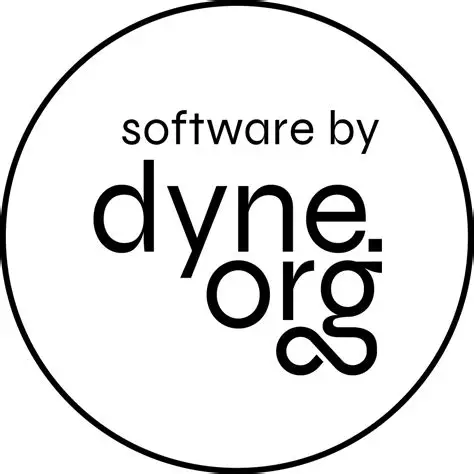A zenswarm oracle is a web API whose identity is registered to a DID controller and is able to run zencode smart contract (through restroom-mw).
This repository contains some utilities that allow a user to
- generate a keyring (which defines the identity of the oracle)
- announce (i.e. register) the oracle to the DID controller
- run a express service which provides all of the restroom-mw middlewares
- deannounce (aka goodbye) the oracle identity
Before using Zenswarm oracle you need:
- Zenroom
- Jq
- Docker
The SECRET directory will be shared with the zenswarm oracle container (by default is called secrets).
For example, this will let the oracle read the keyring we are going to generate.
The following commands also need a restroom instance with an Admin Keyring, you have to set the variables RR_HOST, RR_PORT, RR_SCHEMA and RR_API in the Makefile. To test the oracle you can use our apiroom instance with the following setting:
RR_PORT := 443
RR_HOST := apiroom.net
RR_SCHEMA := https
RR_API := W3CDID/create_sandbox_zenswarm_did.chain
The first step is to generate the keyring of the oracle
make keygen DESCRIPTION="test oracle"This command will generate a file secrets/keys.json with the newly created keyring.
Then, one has to announce the oracle to the DID controller.
make announce URL=`IP or FQDN`This command will generate two files:
secrets/DID.jsonwith the the DID;secrets/DID_document.jsonwith the the DID document and the DID document metadata;
At this point, one can run the oracle instance
make build
make run ORACLE_TYPE=common ORACLE_NAME=first-oracleThat will be launched on localhost on port 3000. To see the available contracts visit http://localhost:3000/docs.
To stop the container simply run
make kill
Finally, once the oracle is no more needed, one have to deannounce the oracle to the DID controller.
make goodbyeFirst of all, you have to start a distributor. It will keep a list of announced oracles, it will announce new oracles and dsitribute a request at random.
One can start a distributor oracle using
make run ORACLE_TYPE=distributor
It will expose and API that will let other oracle announce. During this phase it will have to:
- record its domain name in redis;
- authorize its public key (with a call to a smart contract);
- (TODO: record its DID).
During startup it will have to announce to a distributor, by sending a JSON like
{
"domain_name": "....",
"address": "....",
....?
}
using the command
make announce
And can start the oracle with
make run ORACLE_TYPE=common
At this point, the node owner can submit the signature of its address to the Smart Contract
sequenceDiagram
autonumber
participant A as Oracle Owner
participant D as Distributor/Restroom-mw.DID_Admin
participant I as did.dyne.org
rect rgb(191, 223, 255)
note left of A: `make keygen`
A->A: Keygen
end
rect rgb(191, 223, 255)
note left of A: `make announce`
A->A: Create DID Document
A->>D: Request to sign DID-Document
D->D: Verifies signature(s) of DID-Document
D->D: Sign sign DID-Document
D->>I: Request register Oracle DID-Document
I->>D: Return registered DID-Document
D->D: (If Distributor) store DID-Document in DB
D->>A: Return DID-Document signed
A->A: Stores signed and registered DID-Document on file system
end
- Oracle owner generates a private and public keys (SKs + PKs) via
make keygen - Oracle owner creates DID-Document with PKs via
make announce - Oracle owner request DID-Document signature and registration
- Distributor/Restroom-mw.DID_Admin verifie signature(s) of DID-Document
- Distributor/Restroom-mw.DID_Admin signs DID-Document using DID.domain.context_A sk
- Distributor/Restroom-mw.DID_Admin request did.dyne.org to registers DID-Document
- did.dyne.org returns registered DID-Document
- (If Distributor is acting) stores DID-Document on DB
- Distributor/Restroom-mw.DID_Admin returns DID-Document to Oracle Owner
- Oracle owner stores signed and registered DID-Document on file system
sequenceDiagram
autonumber
participant A as Oracle Owner
participant I as did.dyne.org
rect rgb(191, 223, 255)
note left of A: `make goodbye`
A->A: Create DID deactivation request
A->>I: Request deactivation
I->I: Deactivate DID-Document
I->>A: Return deactivated DID-Document
end
A DID Document has to be signed by an admin. It is simple to setup a restroom instance which offers a contract to sign DID Document, it just need a DID Admin secret key.
One can also make an oracle offer the contract to sign DID Document, this kind of oracle is known as "Distributor". One may decide to use a Distributor, instead of a simple restroom instance if he wants more features, e.g. being able to listen to websockets.

Copyleft (ɔ) 2023 by Dyne.org foundation, Amsterdam
Designed, written and maintained by Denis Roio, Andrea D'Intino, Alberto Lerda and Matteo Cristino.
Zenswarm oracle - Announced restroom-mw instance
Copyleft (ɔ) 2023 Dyne.org foundation
This program is free software: you can redistribute it and/or modify
it under the terms of the GNU Affero General Public License as
published by the Free Software Foundation, either version 3 of the
License, or (at your option) any later version.
This program is distributed in the hope that it will be useful,
but WITHOUT ANY WARRANTY; without even the implied warranty of
MERCHANTABILITY or FITNESS FOR A PARTICULAR PURPOSE. See the
GNU Affero General Public License for more details.
You should have received a copy of the GNU Affero General Public License
along with this program. If not, see <http://www.gnu.org/licenses/>.